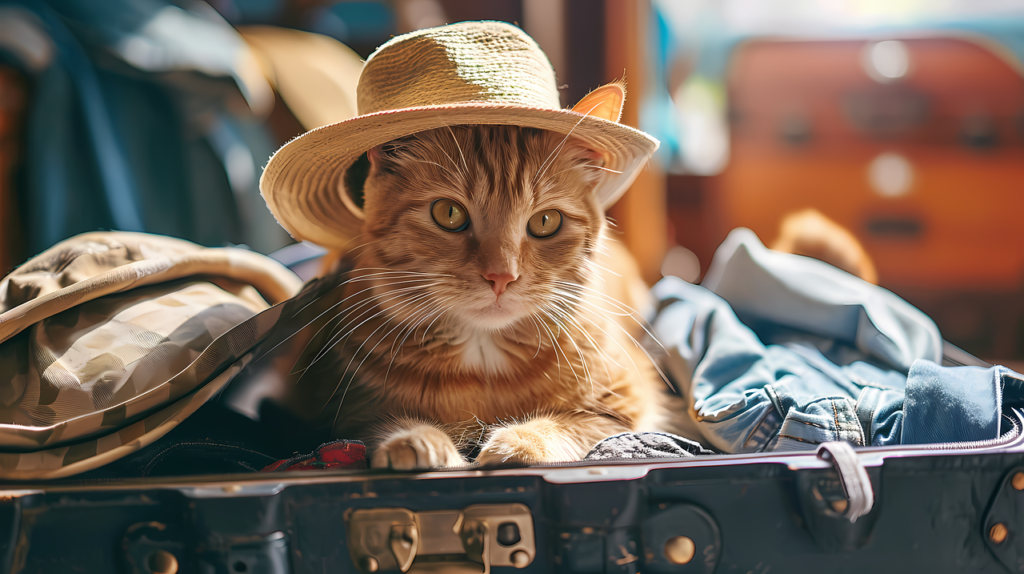Traveling with your cat can be a rewarding experience, whether you’re embarking on a road trip, moving to a new home, or simply taking a vacation. However, cats are creatures of habit and may find traveling stressful or overwhelming. With proper preparation and consideration, you can ensure your cat’s journey is safe and stress-free. Here are some tips to help make traveling with your cat a breeze:
1. Start Early
Introduce your cat to travel gradually to help them become accustomed to the experience. Start by taking short trips around the neighborhood or to nearby destinations before embarking on longer journeys. This allows your cat to become familiar with the sights, sounds, and sensations of travel.
2. Invest in a Secure Carrier
A sturdy and secure cat carrier is essential for safe travel. Choose a carrier that is spacious enough for your cat to stand up, turn around, and lie down comfortably. Opt for a carrier with good ventilation and secure latches to prevent escapes. Place a soft blanket or towel inside the carrier to provide comfort and absorb any accidents.
3. Make the Carrier a Positive Space
Encourage your cat to associate the carrier with positive experiences by leaving it out in your home with the door open and placing treats, toys, or catnip inside. This helps your cat feel more comfortable and relaxed in the carrier and reduces anxiety associated with travel.
4. Plan Ahead
Before traveling, ensure your cat’s vaccinations and microchip information are up-to-date, and pack essential items such as food, water, medication, litter, and grooming supplies. Familiarize yourself with pet-friendly accommodations and amenities at your destination, including hotels, restaurants, and rest areas.
5. Travel During Off-Peak Hours
Avoid traveling during peak hours or extreme temperatures, as this can be stressful for your cat. Plan your journey during quieter times when traffic and noise levels are minimal, and temperatures are comfortable.
6. Secure the Carrier
When traveling by car, place the carrier on a stable surface, such as the back seat or floor, and secure it with a seatbelt or other restraint system to prevent it from shifting or tipping over. Avoid placing the carrier in the trunk or on the front seat, as these areas can be unsafe and uncomfortable for your cat.
7. Provide Comfort and Reassurance
During the journey, speak to your cat in a calm and soothing voice to provide reassurance and comfort. Offer occasional treats or toys to help distract and entertain your cat during the journey. Avoid opening the carrier while in transit, as this can pose a risk of escape or injury.
8. Take Breaks
If traveling long distances, plan regular breaks to allow your cat to stretch their legs, use the litter box, and drink water. Choose quiet and safe rest areas away from traffic and noise, and never leave your cat unattended in the car.
9. Monitor Your Cat’s Behavior
Keep an eye on your cat’s behavior during the journey and watch for signs of stress or discomfort, such as excessive meowing, panting, pacing, or vomiting. If your cat exhibits signs of distress, pull over at the nearest safe location and provide comfort and reassurance.
10. Consult Your Veterinarian
If you have any concerns about traveling with your cat, consult your veterinarian for personalized advice and recommendations. Your vet can provide guidance on travel preparations, medication options for anxiety or motion sickness, and tips for keeping your cat safe and comfortable during the journey.
By following these tips and taking the time to prepare and acclimate your cat to travel, you can ensure safe and stress-free journeys for both you and your feline companion. With patience, preparation, and plenty of love and reassurance, traveling with your cat can be a rewarding experience for both of you.



